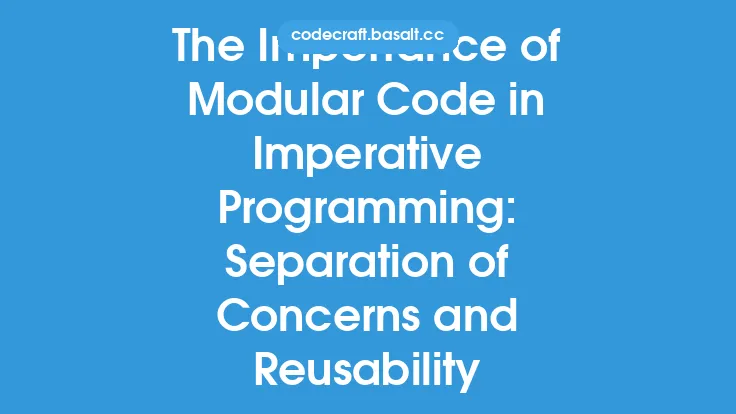Object-oriented programming (OOP) is a fundamental concept in software development that has been widely adopted across various programming languages and paradigms. At its core, OOP is based on four primary principles, often referred to as the four pillars of OOP. These pillars are the foundation upon which object-oriented programming is built, and they provide the necessary framework for designing, developing, and maintaining complex software systems. In this article, we will delve into the details of each pillar, exploring their definitions, benefits, and applications in software development.
Encapsulation
Encapsulation is the first pillar of OOP, and it refers to the concept of bundling data and its associated methods that operate on that data within a single unit, called a class or object. This helps to hide the internal implementation details of an object from the outside world, exposing only the necessary information through public methods. Encapsulation provides several benefits, including data hiding, code organization, and improved security. By encapsulating data and behavior, developers can create self-contained modules that are easier to understand, modify, and maintain. For example, a `BankAccount` class can encapsulate the account balance and provide methods for depositing and withdrawing funds, without exposing the internal implementation details of how the balance is stored and updated.
Abstraction
Abstraction is the second pillar of OOP, and it involves representing complex systems in a simplified way, focusing on essential features and behaviors while ignoring non-essential details. Abstraction helps to reduce complexity, improve modularity, and enhance flexibility in software design. By abstracting away low-level details, developers can create high-level interfaces that are easier to understand and use, making it simpler to develop and maintain large-scale software systems. For instance, a `Vehicle` abstract class can provide a common interface for different types of vehicles, such as cars, trucks, and motorcycles, without worrying about the specific details of each vehicle type.
Inheritance
Inheritance is the third pillar of OOP, and it allows one class to inherit the properties and behavior of another class, creating a parent-child relationship between them. The child class, also known as the subclass or derived class, inherits all the fields and methods of the parent class, also known as the superclass or base class, and can also add new fields and methods or override the ones inherited from the parent class. Inheritance promotes code reuse, facilitates the creation of a hierarchy of related classes, and enables the development of more specialized and targeted classes. For example, a `Square` class can inherit from a `Rectangle` class, inheriting the properties and behavior of a rectangle and adding additional constraints and methods specific to a square.
Polymorphism
Polymorphism is the fourth and final pillar of OOP, and it refers to the ability of an object to take on multiple forms, depending on the context in which it is used. Polymorphism can be achieved through method overriding or method overloading, allowing objects of different classes to be treated as objects of a common superclass. This enables more flexibility in programming, as objects can be used in a variety of situations without knowing their exact class type at compile time. Polymorphism also promotes generic programming, making it easier to write code that can work with a wide range of data types and objects. For instance, a `Shape` class can have a `draw` method that is overridden by its subclasses, such as `Circle`, `Rectangle`, and `Triangle`, allowing a list of shapes to be drawn without knowing the specific type of each shape.
In conclusion, the four pillars of OOP - encapsulation, abstraction, inheritance, and polymorphism - provide a solid foundation for designing and developing complex software systems. By applying these principles, developers can create robust, maintainable, and scalable software that is easier to understand, modify, and extend. As software development continues to evolve, the importance of these pillars will only continue to grow, making them essential concepts for any programmer to master. Whether you are working on a small-scale application or a large-scale enterprise system, understanding and applying the four pillars of OOP will help you create better software, faster and more efficiently.





